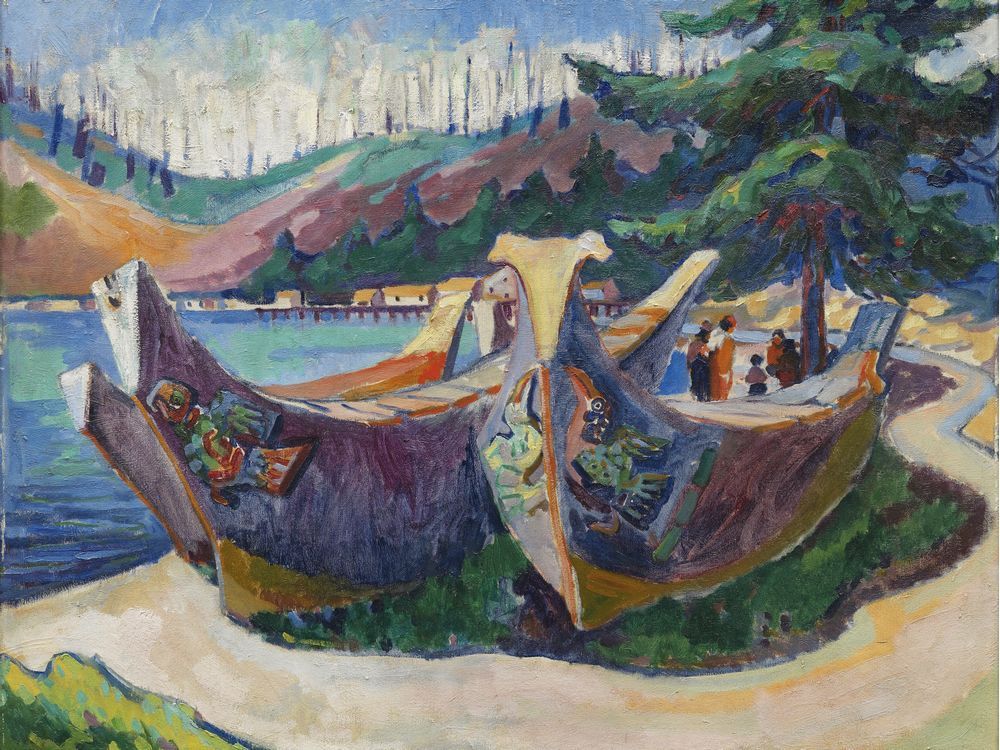Emily Carr's trip to France in 1910-11 led to breakthrough for artist

Credit to Author: Kevin Griffin| Date: Thu, 19 Sep 2019 17:00:53 +0000
WHISTLER — When did Emily Carr become the Emily Carr loved by Canadians across the country?
A new exhibition at the Audain Art Museum in Whistler makes the visual argument that a big step in Carr’s transformation from someone with talent into one of Canada’s top artists occurred during her trip to France in 1910 and 1911. During those 16 months, Carr took lessons from artists who could teach her about a new approach to artmaking called modernism being followed by the avant-garde in Paris. The lessons paid off: Carr’s work was chosen for the 1911 exhibition in the city’s Salon d’Automne, arguably the top art show in the world at the time.
Kiriko Watanabe is co-curator along with Kathryn Bridge of the AAM exhibition, Emily Carr: Fresh Seeing, which opens Saturday.
Watanabe said the exhibition brings together 64 watercolours and paintings from numerous private and public collections. They’re arranged chronologically and include works that Carr made in France, as well as works she did immediately after returning to B.C. and going on a summer trip up the coast to the remote Gitxsan, Wet’suwet’en, Haida and Kwakwaka’wakw communities.
“There was a window of time after she came back from France until she started visiting First Nations villages that summer,” Watanabe said at the museum. “That’s probably when she started looking at her old works, her watercolours, and started to incorporate colours and techniques she learned in France. You can see her confidence increasing.”
Curtis Collins, director and chief curator of the Audain Art Museum, and Kiriko Watanabe, co-curator of Emily Carr: Fresh Seeing, flank House With Slanted Roof, Brittany, which Emily Carr painted while she was in France in 1911. Kevin Griffin photo.
Carr’s accomplishments are all the more surprising when you think about what kind of obstacles she faced as a female artist in the early part of the 20th century. Carr was born in Victoria in 1871, the first in her family to be born Canadian. She grew up in a small colonial outpost on the western edge of Canada in a city that didn’t even have a public art gallery until 1951, six years after her death. Showing artistic talent as a youngster, she was single-minded in not letting her geographic isolation so far from the centres of the art world stop her.
After studying art in San Francisco and London, Carr figured out that something special was happening in Paris. She even said so in an unpublished manuscript quoted in the exhibition’s handsome catalogue.
“ … Everyone said Paris was the top of art and I wanted to get the best teaching I knew,” Carr wrote.
In Paris, she started studying with Harry Phelan Gibb, an artist connected to the startling new modernist movement called Fauvism. Because they used unconventional colours that didn’t follow realistic conventions, they were known as Les Fauves or Wild Beasts. Their followers included recognized artists such as Henri Matisse.
In the exhibition, you can see how Gibb’s work influenced Carr who experimented with looser, expressive, brush strokes and black outlines to accentuate forms, especially totem poles. Two works illustrate how Carr’s experiences in France influenced her. One is called War Canoes, Alert Bay, painted in 1908. A watercolour in subdued tones, it looks like Carr was trying to realistically depict two Kwakwaka’wakw war canoes lying side-by-side on the beach.
In 1912, Carr returned from France and relocated to Vancouver. In her studio near Granville and Broadway streets she made a new version of her 1908 watercolour of the war canoes. This time, it’s much been transformed into a West Coast version of Les Fauves. Pared down, simplified forms and vibrant colours such as bright green and orange make the front of the canoes pop out of the surface of the painting. Watanabe has deliberately placed the two war-canoe paintings close to each other on opposite walls in the exhibition.
“I would like people to look at both of them carefully and observe the differences that were made in a few years,” she said. “There are a lot of observations you can only make when you’re in the space.”
This photo shows Emily Carr on a picnic in 1912 in Haida Gwaii after her big trip to France. Carr is shown in the foreground with her dog Billie. On the left is believed to be Edna Leary and on the right, Clara Russ. The photographer is believed to be William Russ.
In Watanabe’s essay in the exhibition, the curator has added something new to a growing body of writing around Carr. In what is believed to be a first, she talked to Indigenous B.C. artists and asked them what they thought about Carr’s work. Watanabe went to Haida Gwaii to talk to artists James Hart and his son, Gwaliga. James Hart was chosen in part because his The Dance Screen (The Scream Too), a monumental 4.75-metre-by-3.2-metre cedar artwork, is one of the highlights of the AAM’s collection.
What increases the importance of Carr’s early B.C. watercolours is that they predate colour photography. They’re often the only records in colour of totem poles and other scenes of Indigenous village life on the northwest Coast.
“It’s got an energy,” James Hart says in the essay, referring to Carr’s watercolours. “To us, we still consider renditions of her poles to be from our old people.”
Emily Carr: Fresh Seeing — French Modernism and the West Coast opens Saturday, Sept. 21, at the Audain Art Museum in Whistler. The exhibition continues to Sunday, Jan. 19, 2020.
Le Paysage (Brittany Landscape), 1911, oil-on-board, by Emily Carr. Le Paysage was shown in the 1911 Salon d’Automne in Paris.